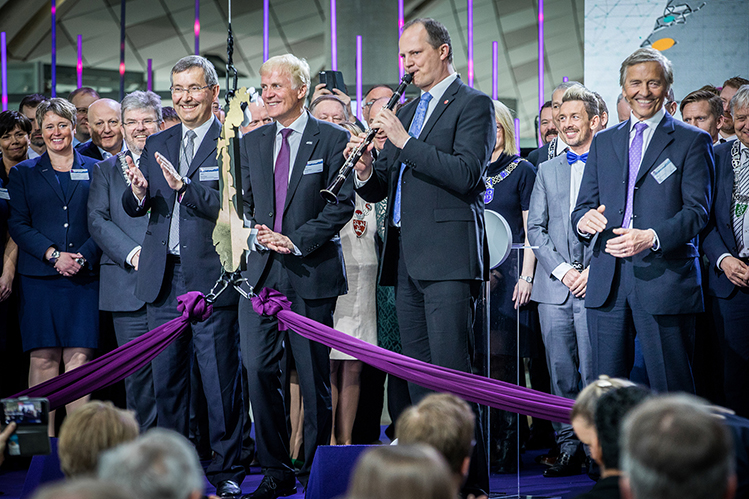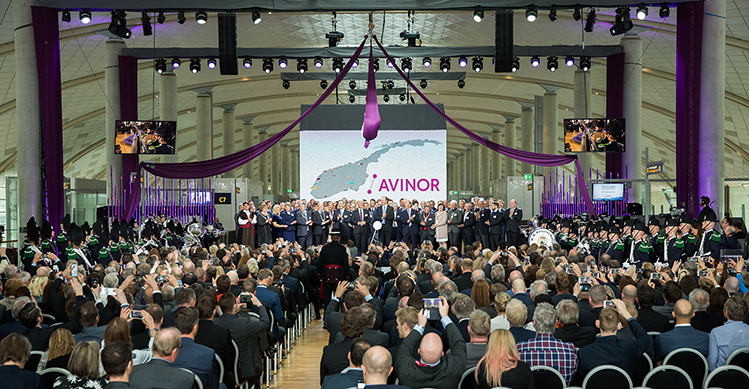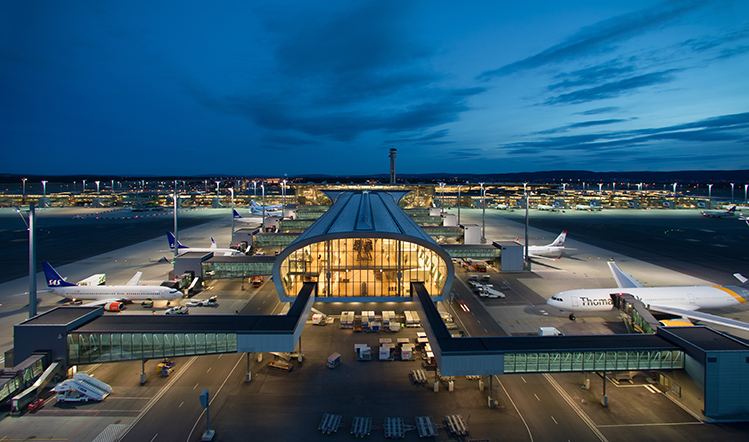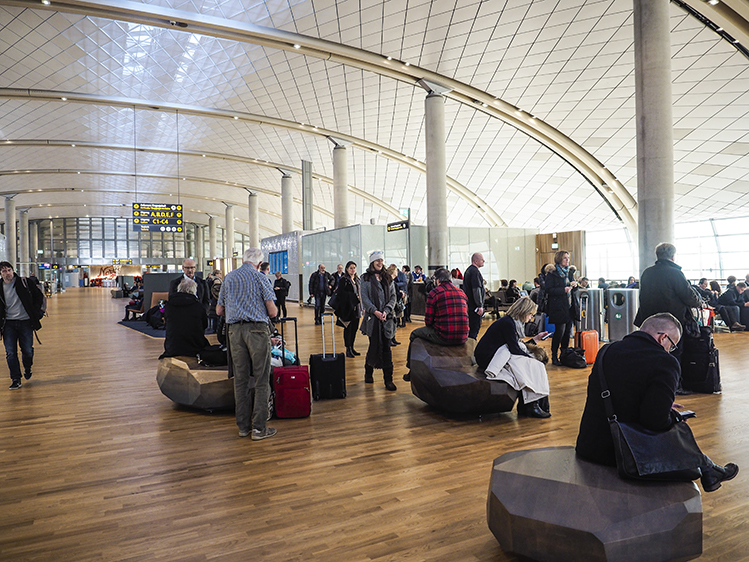The new Oslo Airport, as it is described, was officially opened by Minister of Transport and Communications Ketil Solvik-Olsen on 27 April. It is a project that is important to the whole nation.

At the official opening: Øyvind Hasaas, Managing Director, Oslo Airport; Dag Falk-Petersen, CEO Avinor; and Ketil Solvik-Olsen, Minister of Transport and Communications.
“Norway depends on a well-functioning main airport,” says Solvik-Olsen. “We now have a large international airport that will be the pride of the entire nation. This is a state-run flagship project that has been on schedule and within budget. Avinor can safely be proud of the work put into this expansion.”
Since construction began in 2011, traffic has consistently increased each year and exceeded 25 million passengers in 2016. The expansion gives Oslo Airport an increased capacity of 32 million annual passengers.

The official opening of the expanded Oslo Airport on 27 April. The expansion creates a hub that “will make Norway more competitive on an international level”.
Avinor CEO Dag Falk-Petersen has been following the expansion closely throughout the process and is very pleased with the result. He feels that Norway now has an airport that will benefit the entire country. “We have invested NOK 14 billion in this expansion, and it will make Norway more competitive on an international level,” he says. “It is important for Norway to have a well-functioning hub, which Oslo Airport is to us, and the profit from this is used to finance the rest of the Norwegian aviation network. We are very proud of the fact that the expansion has been completed without really affecting the passengers, and that Oslo Airport has been named the most punctual airport in Europe three times during this period.”

Oslo Airport’s expansion enhances passenger experience, creating more space to accommodate the forecast higher rate of growth in years to come. The airport journey itself is characterised by its simplicity, with short walking distances, light and airy progressions, and a tangible sense of place with the prevalence of Nordic materials. Photo credit: Avinor Oslo lufthavn Espen Solli
The expansion enhances passenger experience, creating more space to accommodate the forecast higher rate of growth in years to come. The airport journey itself is characterised by its simplicity, with short walking distances, light and airy progressions, and a tangible sense of place with the prevalence of Nordic materials. The new pier is, like the main building, held up by laminated wood constructions and concrete columns. The interior has been modernised, with a large presence of natural materials and solid, flexible solutions. The transition towards the existing terminal building was considered especially important, both on a conceptual level and in the development of the final design. The architects’ idea was that the main building should be seen as the dominant element from afar, the intake of daylight had to be maintained, and the transition between the new and the old parts should come across as “simple, pure and undramatic”.
“We have put great emphasis on functionality, design and architecture,” explains Øyvind Hasaas, Managing Director, Oslo Airport. “The airport must be perceived as functional and accommodating to all visitors, and it should also be a building for Norway to be proud of. As the major traffic hub in this country, we are responsible for making the journey as pleasant as possible for all travellers, and we now believe we are equipped to compete with the top airports in Europe.”
An important element of the expansion is the new and innovative solutions to reduce the airport’s environmental emissions. Indeed, Oslo Airport is accredited at Level 3+ Neutrality of ACI’s Airport Carbon Accreditation. The expansion is a model project for climate and environmentally friendly building materials. Extensive use of wood was a deliberate climate choice. The supporting beams for the roof and floor in the north pier are made of wood, and the entire roof of the new pier is also covered by boards of Norwegian oak. All the wood is documented as sustainably felled. “We have also used climate-friendly concrete, which is produced with almost half the climate gas emissions of regular concrete,” comments Thorgeir Landevaag, Director of Terminal Development and Operations. “Much of the metal is recycled. All materials have low gas emissions to the indoor climate. These have been chosen in order to create a good indoor climate for both the passengers and those who work in the terminal.”

Oslo Airport’s new pier is, like the main building, held up by laminated wood constructions and concrete columns. The interior has been modernised, with a large presence of natural materials and solid, flexible solutions. Photo credit: NORDIC Office of Architecture Dag Spant
Hasaas adds that the expansion paves the way for great customer experiences, with more room, restaurants and shops. “We now offer even better airline facilities, and this hopefully means more direct routes to large and important markets around the world. There are many new features, and it is important to pay attention to the new layout both before arrival and while navigating the airport. Throughout the rest of 2017, there will still be some sporadic construction work, and we will be introducing more new, exciting shops and restaurants in the months to come. The goal is that our passengers and collaborators at the airport will be happy with our work and proud of their airport,” he concludes.







